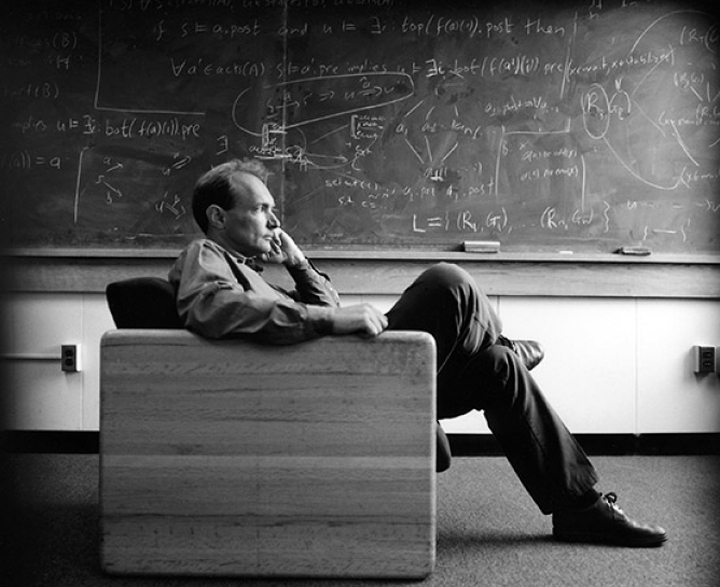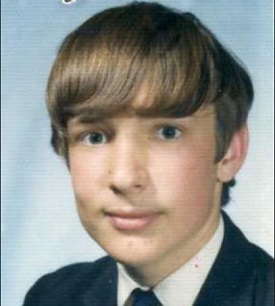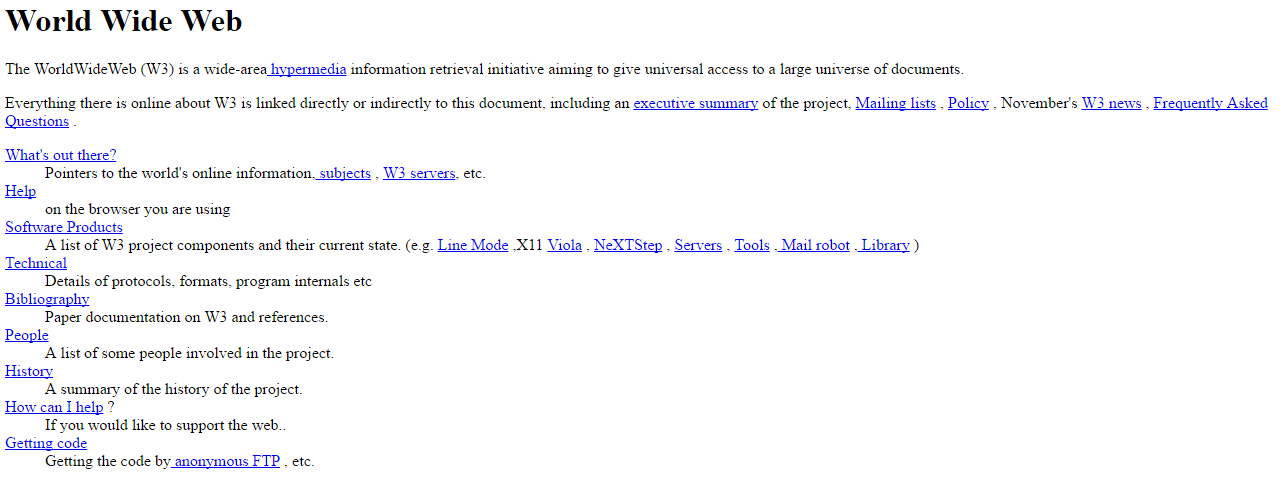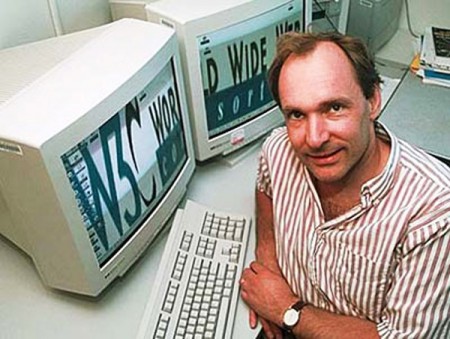Creator of the World Wide Web Tim Berners-Lee changed the world, but he himself remained the same

photo: firepic.org
25 years ago, on August 23, 1991, British scientist Timothy Berners-Lee officially introduced the world's first website. During this time, the world has changed dramatically.
However, what constitutes the Internet now does not coincide with the original intention of Berners-Lee. Good or bad - a controversial issue. What does the creator of WWW think about this? Which way was Berners-Lee himself?
')
Timothy John Berners-Lee hails from the UK. He was born June 8, 1955 in London. His parents, Conway Berners-Lee and Mary Lee Woods, were mathematicians. They were also associated with IT: conducted research in the field of creating one of the first computers - Manchester Mark I.
In addition, the prerequisite for the invention of the WWW was the idea of the American scientist Vannevar Bush, who invented the concept of hypertext.
In a broader sense, a hypertext is a literary work, a dictionary or an encyclopedia containing configurations (patterns), the use of which allows to correlate parts of the text not connected by a linear sequence, regarding them as an embodiment of semantic unity.
In computer terminology, hypertext is a text formed using a markup language with the expectation of using hyperlinks.
A few years after the birth of Tim Berners-Lee, Ted Nelson came up with a proposal to create a “documentary universe”, where all texts ever written by humanity would be linked together by what we would call today “cross-references.”
Childhood and youth
At age 12, Tim entered the private school of Emanuel in the town of Wandsworth. There the boy began to show interest in the exact sciences. After graduation, he went to college at Oxford. Once he was denied access to educational computers for a serious offense - a hacker attack (according to another version, he was caught at the computer of a nuclear physics laboratory at computer games). In those days, computers were large, and computer time was expensive.
This circumstance prompted Tim to the idea that he could assemble the computer himself. After a while, he had a home-made computer based on the M6800 processor, with a regular TV instead of a monitor and a broken calculator - instead of a keyboard.

Career
Berners-Lee graduated from Oxford in 1976 with a degree in Physics, after which he began his career at Plessey Telecommunications Ltd. in Dorset. The scope of his activities at that time were distributed transactions. After a couple of years he moved to another company - DG Nash Ltd, where he developed software for printers.
The next job played a decisive role in the fate of Tim, and of all mankind. The European Laboratory for Nuclear Research (CERN, CERN) was located in Geneva (Switzerland). There, Berners-Lee developed the program Enquire (literal translation from English sounds like “investigator”, “reference” or “notebook”), which used the method of random associations. The principle of its work, in many respects, was the basis for the creation of the World Wide Web.
Then Tim worked for three years as a system architect. And as part of his research at CERN, he developed a number of distributed systems for collecting data.
From 1981 to 1984, Tim Berners-Lee worked at Image Computer Systems Ltd.
Www
In 1984, he returned to CERN, receiving a scholarship there. At this time he worked on the FASTBUS system and developed his own RPC system (Remote Procedure Call, English). In addition, the Enquire program has undergone processing.
At the new stage of development, it should have not only supported arbitrary hypertext links, making it easier to search the database, but also become a multiplayer and cross-platform system.
The main task of the new program was to publish hypertext documents that would be linked by hyperlinks. This made it possible to significantly facilitate the search for information, its systematization and storage. Initially it was assumed that the project will be implemented in the internal network of CERN for local research needs, as a modern alternative to the library and other data warehouses. At the same time, data downloading and access to them were possible from any computer connected to the WWW.

Despite the skepticism of senior colleagues, in 1989 a project called the World Wide Web was approved and implemented. A huge help in this work Tim had Robert Cayo (Robert Cailliau).
In the autumn of 1990, CERN employees received the first “web server” and “web browser” for use, written by Mr. Berners-Lee himself in the NeXTStep environment. In the summer of 1991, the WWW project, which conquered the scientific world of Europe, crossed the ocean and joined the American Internet.
Work on the project lasted from 1991 to 1993: the developers collected user feedback and based on them developed the World Wide Web. In particular, even then, the first versions of the URL protocols (as a special case of the URI identifier), HTTP and HTML were proposed. The first hypertext web browser, the World Wide Web, and the WYSIWYG editor were also introduced.
One of the key properties of the WWW has always been considered node decentralization. Like the progenitors of the Internet (ARPANET and NSFNet), it ensured the reliability of operation, the absence of geographical boundaries and political barriers.
Since the web began its rapid development in 1991, it has gradually changed, losing its main features. Root DNS servers were concentrated in the United States, which made the Network more vulnerable.
Looking ahead, we will quote Tim about what it all led to:
The monopoly on Internet services is formed in a standard way: first, people are offered a convenient way to do something on the Web for free. Search the Internet and on the map, on a computer and a smartphone, communicate in the mail, chat and social networks, watch videos and post your own, plan business and holidays, work with documents directly from the browser ... If there are not enough analogs of popular services, then they simply buy from other companies, without letting the latter grow into a large holding and compete.
At some point, everything that has become customary for many is on the servers of a single company that knows about each person and their interactions too much. Google, Microsoft, Yahoo, Apple, Facebook ... As long as you think that you use their products, they use your data, divide the Internet among themselves and begin to dictate more stringent conditions. Login to Google to post a comment on YouTube. Allow location tracking, share your profile and friends list ...

Page of the world's first website
The first website in the world, Berners-Lee has created at info.cern.ch/ , the site is now archived. This site appeared on the Internet on August 6, 1991. Its content was introductory and auxiliary information. The site described what the World Wide Web is, how to install a web server, how to get a browser, and so on. This site was also the world's first online catalog, because later Tim Berners-Lee posted and maintained a list of links to other sites there.
Further development of the Web
Since 1994, Berners-Lee has been heading the MIT Informatics Laboratory (now the Laboratory for Informatics and Artificial Intelligence, together with the Massachusetts Institute) at the Founders Department of 3Com, where he works as a lead researcher.
In 1994, the MIT World Wide Web Consortium (W3C) was founded at the Laboratory and continues to develop and implement standards for the Internet. In particular, the Consortium is working to ensure a stable and continuous development of the World Wide Web - in accordance with the latest requirements of users and the level of technical progress. W3C aims to unleash the full potential of the World Wide Web, combining the stability of standards with their rapid evolution.

In 1999, Berners-Lee published a book titled “Scouring the Web: Results and Future of the World Wide Web.” It describes in detail the process of working on a key project in the life of the author. He also wrote about the prospects for the development of the Internet and Internet technologies and identifies a number of important principles:
1. The ability to edit information on the Web is no less important than the ability to surf. In this sense, Berners-Lee was counting on the concept of WYSIWYG.
2. Computers can be used for “background processes” that help people work together.
3. Every aspect of the Internet should work like a web, not like a hierarchy. In this sense, the unpleasant exception is the domain name system (Domain Name System, DNS), managed by the ICANN organization.
4. IT professionals are not only technical responsibility, but also moral.
In 2004, Berners-Lee became a professor at the University of Southampton, where he worked on a semantic web project. It is a new version of the World Wide Web, where all data is suitable for processing using special programs. This is a kind of “add-on”, which assumes that each resource will have not only plain text “for people”, but also specially encoded content that is understandable to a computer.
The semantic web opens up access to clearly structured information for any application, regardless of platform and regardless of programming languages. Programs will be able to find the necessary resources, classify data, identify logical connections, draw conclusions and even make decisions based on these conclusions. According to Berners-Lee, with widespread distribution and competent implementation of the semantic web can cause a revolution in the Internet.
On July 16, 2004, Queen Elizabeth II of Great Britain produced Tim Berners-Lee as Knights.
In 2005, his second book was published - “Having passed the semantic web: the full disclosure of the potential of the World Wide Web”.
At the moment, Tim Berners-Lee is an outstanding member of the British Computer Society, a foreign member of the National Academy of Sciences of the United States and many others. His work was awarded many awards, including the Order of Merit, a place in the list of the “100 greatest minds of the century” by Time Magazine (1999), the Quadriga Award in the Knowledge Network nomination (2005), the Mikhail Gorbachev Prize in the nomination “Perestroika” - “The Man Who Changed the World” (2011) and others.
March 12, 2014 the web turned 25 years old. On this occasion, the creator of WWW wrote an article in his blog:
In 1993, I was able to convince CERN to declare WWW technology that would be available to everyone and always, without any license fees.
This decision has allowed tens of thousands of people to start building a web together. Today, about 40% of the population of the planet use it. The Web has already brought trillions of dollars to the global economy, transformed education and medicine, and served to spread democracy throughout the world. And this is just the beginning.
Today is a holiday for us. But this is also an occasion to reflect, discuss and start to act. It's time to make key decisions about Internet governance and its development, and it is vital that we all take part in discussing the future of the World Wide Web. How can we be sure that the remaining 60% of humanity will quickly gain access to the Internet? How can we be sure that the web will support all languages and cultures, and not just some of the most common?
How can we agree on the open standards of the coming Internet of Things? Will we allow someone to pack up and restrict our communication in the network or will we protect the magic of an open web and that power to speak, discover and create, which it gives? How can we build a system of checks and balances that ensures accountability to the community of those groups that can spy on the network? Such questions come to me. And you?
The influence of Berners-Lee on the IT industry, and indeed on the world as a whole, is difficult to overestimate. However, he did not seek to receive super-profits from their projects and inventions. He did not become another Gates, Zuckerberg or Jobs. He remained himself.
Source: https://habr.com/ru/post/308546/
All Articles